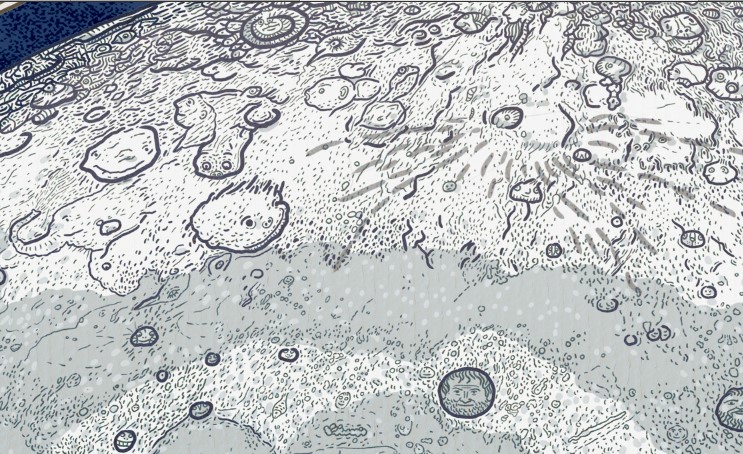GAM 2018 Blog
- Published: Tuesday, April 24 2018 09:00
By EuroPlanet

Our Moon has many different names. It's called Luna by the Romans, Selene and Artemis by the Greeks, and many other names in other mythologies. It has inspired poets as well as scientists. The most ancient formations of the lunar surface are the 4+ billion year old highlands, and the areas where the surface is so densely covered with craters, that a newly created one surely wipes away a few earlier craters. The large basins and the smallest craters were all scooped out by asteroids and space debris coming from the outer space and hitting the Moon. The “seas” (mare) are actually ancient lava plains, which filled up the earlier large impact basins with many layers of lava. The rocks on the lunar surface have been broken up, pulverised by “space dust” for billions of years, creating moon dust covering the entire surface. The ’face’ of the Moon has been unchanged for billions of years. It looked almost the same in the age of the dinosaurs, when the continents of the Earth had completely different shapes. The youngest formations are the light-rayed craters. There is no visible sign of water: even the meandering channels of the Moon were formed by volcanic lava.
Using the map designed for children, they will have an insight into the geography, environmental conditions, astrobiological potential and exploration opportunities of the Moon. The map of the Moon plays with craters and commemorative names: inside some of the selected craters, the person it is named for is shown. Some other craters have funny creatures inside. Visually, the map shows many minute details and is drawn in the style of pre-20th-century engravings. The visual design of the control panel uses the Apollo spacecraft’s control panels as a model. The map shows the mare-terra albedo distinction along with crater rays and also highlights the optically invisible basin outlines, which can only be seen in topographic maps.
Educational Activity Collection. The activity can be viewed and downloaded at: http://astroedu.iau.org/en/activities/1720/childrens-planetary-maps-the-moon/

|
Europlanet links research institutions and companies active in planetary research in Europe and around the world. Planetary science covers the study of our solar system and those around other stars. It is an interdisciplinary field of research that covers astronomy and geophysics, robotic and human exploration of other planets, as well as the search for extra-terrestrial life. More info: https://www.europlanet-eu.org/ Follow Europlanet on Facebook https://www.facebook.com/europlanetmedia/ and Twitter https://twitter.com/europlanetmedia
|
 |









